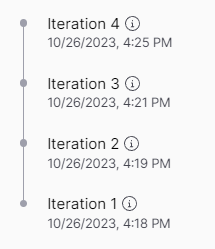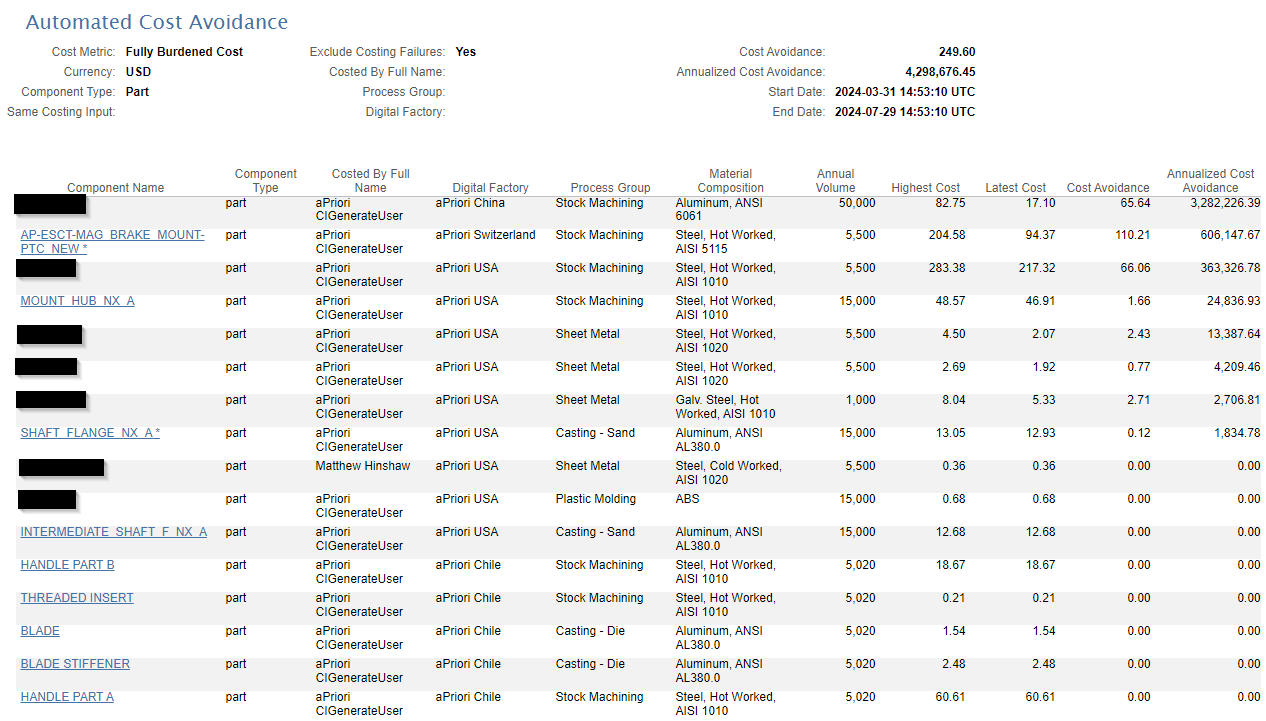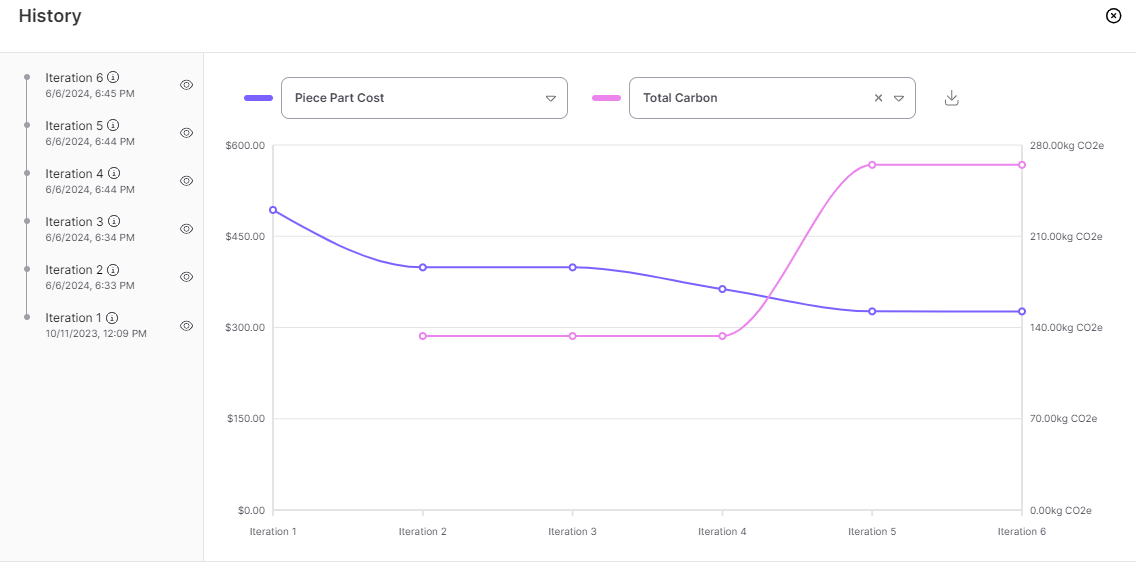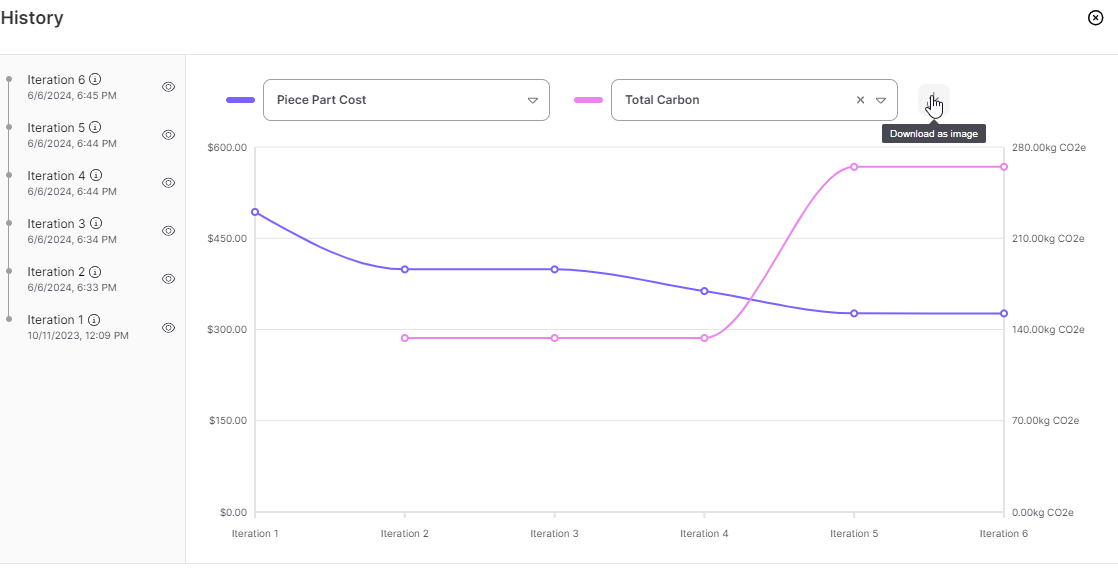Cost Tracking Over Time
Are My Products Getting Less Expensive?
This tutorial helps engineering teams track analysis (cost, manufacturability and sustainability) of designs over time, to:
-
Quickly evaluate the cost/design trends of a project's components – are you improving?
-
Identify design related cost increases early in the product development process.
-
Build a should-cost culture in engineering through review of cost and manufacturability concerns in each phase-gate review.
Part Cost Trend – History View
The History view shows an engineer or engineering management the cost trend of a particular component over a particular period, for all the iterations of that specific scenario.
You can display both trends for piece part cost or fully burden cost, and, cost of material, tooling CO2 footprint, and even DFM rating for each iteration of that part.
Tip: Hover over the info icon on the left-hand side panels to see what changes were made in each iteration. This applies to parts only, not assemblies, as changes could have been made for parts inside the assembly and not the assembly itself.
See View Scenario History for more details.
Plot Multiple Trends
You can plot two trends at the same time. For example, you can see PPC and DFM risk, or PPC and Tooling Cost, FBC and Material Cost.
To display these trends on your aP Design window, for the component that is currently in session:
-
Click on the History icon.
-
Select what you want to display to observe how you are progressing in the design of this component.:
Tip: You can open one of the parts in this assembly and run the same trend.
Review Trends across Scenario Groups
To review cost avoidance trends across a group of scenarios:
-
Navigate to aP Analytics (see aP Analytics user documentation) and run the Automated Cost Avoidance Report:
Here, you reduced the cost of your assembly over time, but almost doubled the carbon footprint. However, you can see that up to iteration 4 your cost was going down and your CO2 footprint was still low.





